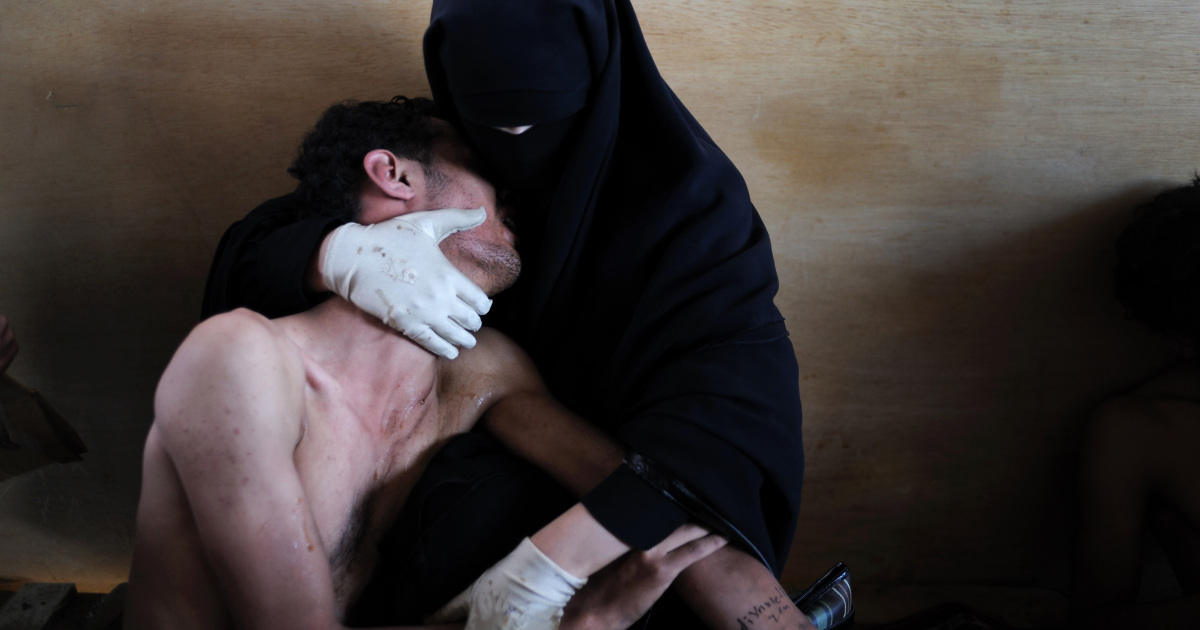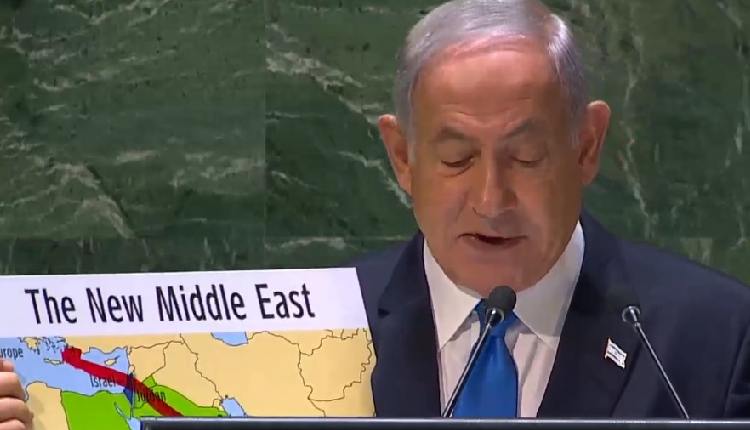
For one Spanish photographer, capturing an award-winning image was the start of an intimate relationship with a country rarely seen beyond the stereotypes.
“Yemen” – I typed the word into a Google search.
It was 2011 and, following the “revolutions” in Tunisia, Egypt and Libya, protests had now started in Yemen.
I had just received an assignment to photograph them for The New York Times. But I didn’t know about the country, so I turned to the internet.
The search results all shared a similarly bleak theme: terrorism, extremism and khat (the stimulant-containing plant popular in the region).
I found myself building up a picture of a country I had never visited before; thinking about the dangers I could face as I tried to organise the logistics of photographing there.
Visas were not easily granted to journalists at the time, so I decided to enrol in an Arabic school in the capital – an excuse to get my student visa and to learn a new language.
The initial plan was to stay there for a couple of weeks, but I ended up spending almost six months in Yemen. It was an experience that changed my life.
Emergency police forces in Al Haseb neighbourhood, in the southern Yemeni city of Taiz, on December 6, 2011 [File:Samuel Aranda]
‘Welcome to Yemen’
It was September when I landed in Sanaa. Waiting in the arrivals hall, I was greeted by the sound of gunfire outside the airport, which I later found out was clashes between the army and the youth who had started the revolution. A customs officer stamped my passport and I exited through a slow and noisy automatic door. It was 8pm; outside the building, a group of men sat on the floor, their cheeks puffed out by the khat they were chewing. They looked at me and smiled. “Welcome to Yemen,” they yelled.
The Arabic school I enrolled in had sent a car to collect me; we drove fast through the narrow streets of Sanaa to the school in the old city, where I would be staying. It was dark, but I was still amazed by those first glimpses of its historic architecture.
At the school, the few other foreigners who were taking Arabic classes welcomed me; there was no electricity so one of them gave me a candle to help me get to my room.
Those first weeks in Yemen went by quickly. Abdelkawy, our amazing Arabic teacher, helped us learn the language. In a few weeks, I knew the alphabet, how to read and write, and understood basic vocabulary and verbs so I could express myself. In class, we sometimes had to hide under our tables when the bombing by government forces started. But when it was quiet again, Abdelkawy would smile and say: “mafi mushkila” (no problem in Arabic) – a sentence that Yemenis would repeat constantly, even in the worst situations one could imagine.
Yemen’s light
It took me some time to gain the confidence to venture out into the streets of the capital to take photographs.
When I did, the warm natural light reminded me more of India than cities like Cairo or Tripoli where the light is usually harsher.
Light is something that, as a photographer, has helped me build an internal memory of the different places I visited. When I look back, I remember countries for their light. And Yemen’s light was exceptional and unique.
Defected Yemeni soldiers shout slogans celebrating the death of Muammar Gaddafi in Libya, saying that Ali Abdullah Saleh is next, during a demonstration on 60th street, Sanaa, on October 21, 2011 [File:Samuel Aranda]
The city at that time was divided in two, and to enter the “rebel zone” you had to cross a few police and army checkpoints that were controlled by forces loyal to then-President Ali Abdullah Saleh. They were trying to keep control of the situation to prevent a revolution similar to the one that had overthrown Tunisia’s Ben Ali a few months earlier.
I soon realised that a motorbike was the easiest way to get around, and through the checkpoints, so I hired a motorcycle taxi driver to drive me around during those first days.
Fatima and Zayed
On the morning of October 15, I heard the now-common sound of shooting and bombing; but it was much louder than on previous days. That day, a large march had been organised and as the marchers had tried to get close to the defence ministry building, the army had opened fire on them.
I headed to Change Square, where protesters who were calling for the resignation of President Saleh were based. The square was filled with hundreds of tents, all packed with civilians – most of them young people – organising and dreaming of change.
A nearby mosque had been converted into a field hospital. Around it, some sandbags had been stacked for protection in case there was an army offensive. At the entrance was an old Foosball table where children were playing. I walked inside.
Yemeni youth cry inside a mosque used as a field hospital in Sanaa on October 18, 2011 [File:Samuel Aranda]
On the floor were the bodies of the dead. One of them was wearing an FC Barcelona shirt – the team I supported, my hometown team.
I heard some people crying from behind a thin wooden wall. I walked around to see tens of others wounded, lying on the floor waiting for medical assistance. I noticed a woman wearing a niqab holding a young injured man in her arms. I raised my camera and took a photo.
Soon after, I made my way back to the Arabic school, walking through the narrow streets that connected the rebel-controlled square with the rest of the government-controlled city. Back in my room, feeling sad and exhausted, I began to edit the photos I had taken that day. That was when I saw the woman and the injured man on my screen for the first time. They were Fatima al-Qaws and her son, Zayed, who had been wounded while participating in the anti-government protests. I added a caption to the image and filed my photo selection to The New York Times.
When it was first published, the image didn’t have that much of an impact. It was merely one more painful picture the world saw that year coming out of what we decided to call the “Arab Spring”. But months later, it went on to win the World Press Photo of the Year award in 2012.
My encounter with Fatima and Zayed was the beginning of an intimate, personal relationship with a country that transformed me.
A change
After that, I had the opportunity to travel all around Yemen with Laura Kasinof, a colleague who had been living there long before the revolution began.
When, like me, you are born and grow up in a Western country, you are taught to think that your way of life is the good one, the correct one. And that is how we sometimes approach and judge anything that is far from our norms or standards. But slowly and surely, Yemen began to change this.
One of the first things I noticed early on was the impossibility of eating alone. I would arrive at a restaurant, look for an empty table far from everyone else so I could have my space, and sit down. But seconds later, someone would join me, talking, asking questions about my cameras and where I was from.
An empty restaurant without electricity in Sanaa on October 16, 2011 [File: Samuel Aranda/The New York Times]
Other times, on public transportation (the 15-seater vans that carry people from one place to another), the short ride shared with strangers would not be spent in silence. Money would flow from hand to hand to pay the driver, a joke would make someone laugh, and almost every time somebody would want to sing to me.
In Yemen, I also met some of the most extraordinary people I know. Mohamed Sayagi, a local freelance photographer, opened the doors of his family’s home to me – we celebrated the birthday of his daughter Noor in their ground-floor apartment at the peak of the conflict, when it was difficult to even find water. But Mohamed and his family kept smiling and shared what they had with me.
Over the following months in Yemen, I photographed many things, including daily life inside the men’s section of an old hammam (bath). I sat at the youth camp in Change Square sharing songs and poetry with the protesters – one of the songs we listened to most often was “Waka Waka” by Colombian singer Shakira, but Yemenis had changed the lyrics and turned it into a protest song. I spent time on the rooftops of houses in the Old City which had been turned into “mafrash”, where people sit together, chatting for hours, sharing opinions, dreams and sunsets while chewing on khat.
Growing and learning
Another thing Yemen gave me was a sense of spirituality.
I come from Spain, a predominantly Christian country, where the church was linked to the far-right during the civil war and Franco’s dictatorship. For many like me who grew up in left-wing working-class families, religion was not a priority.
Anti-government protesters pray at Change Square in Sanaa on November 28, 2011 [File:Samuel Aranda]
But one day in Sanaa, after a long, sad day of bombings, I felt broken inside, with no energy to even talk or cry. I found myself seeking some kind of solace in a mosque. Some Yemeni friends explained to me how to pray, and I stood in congregation next to them. When we finished, we hugged each other. And I felt relief.
It is easy to fall into a naive way of thinking about the beauty of ancient cultures and traditions, or about the happiness of living a life with just the bare necessities. And it may be reductive and unfair of me to think so with the European privileges I have, but what I am sure of is that in Yemen, I spent the best times of my life.
The fairest way I can say it is that photography, for me, became an excuse to discover places I never would have had the opportunity to visit. It helped me learn about other approaches to life, other religions and mentalities. And it taught me not to judge them from my Western roots, but to grow and learn more every day.
It was difficult returning from Yemen to Barcelona after that first trip. Normally, when I am travelling on assignment, I always like to get back home. But that time was different. I took the local train to visit my mom in Santa Coloma de Gramenet, a working-class city neighbouring Barcelona. My parents had relocated there in the 1970s from Andalusia, in southern Spain, in search of a better life.
On the train, a woman was reading a book that I had just finished by Orhan Pamuk, Istanbul: Memories and the City. As if I were in a shared van or a busy restaurant in Yemen, I started talking to her about the book. But she looked back at me with the face of someone who did not like the interruption.
For a moment, I had forgotten. I was no longer in Yemen, I was back in the West.







